"Howdy folks, we're coming to you live on the airwaves" ~ Vintage songs, not vintage values ~ Lilo, they/her
Don't wanna be here? Send us removal request.
Text

“Sex Change Just ‘Legal Correction’”, March 31. 1956.
#trans history#queer history#love this#i love this nonchalant energy of- just 'legal correction'#it's giving: just a legal correction dw abt it :))#and i love that#i wish we had a lil more nonchalance about gender these days#instead of turning everything into a huge debate
10K notes
·
View notes
Photo

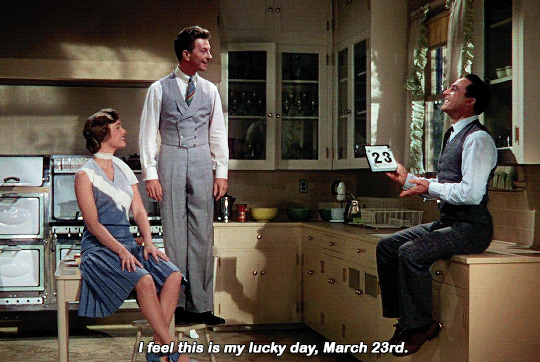
SINGIN’ IN THE RAIN dir. Stanley Donen + Gene Kelly
#1950s#song and dance folks#old hollywood#singin in the rain#singin' in the rain#what you thought i'd forget about singin in the rain's iconic good morning scene???#(i almost did so everyone thank tumblr lmao)
124K notes
·
View notes
Text
A treacherous part of my brain asked me an impossible question as I fell asleep last night: What is the best jazz standard?
To which the obvious reply is: it depends
Are we looking at the best in terms of the most popular? The best composition? The best arrangement? The best vocalist? The most fitting vocalist for that particular song?
If anyone has a definitive answer, do reach out and let me know because I somehow stumbled onto and settled on the answer of 'Dream a Little Dream of Me'
#radio chatter#jazz standards#jazz#currently listening to#dream a little dream of me#genuinely curious what other folks think#also#i haven't even considered purely instrumental standards- i was just thinking of vocal standards
0 notes
Text



JEAN HARLOW & CLARK GABLE in HOLD YOUR MAN — 1933, dir. Sam Wood
344 notes
·
View notes
Text

A Marlene Dietrich Columbia Pictures publicity portrait. 1942
727 notes
·
View notes
Text
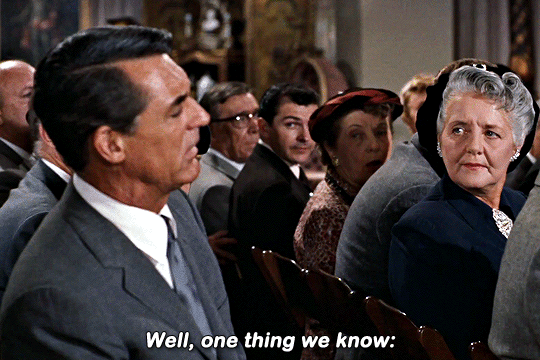
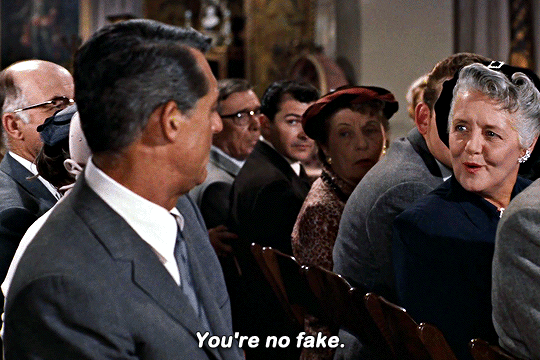
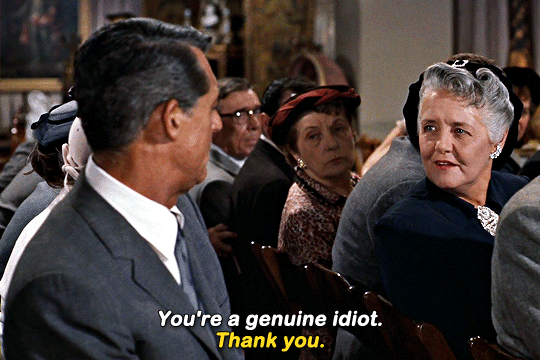

"How do we know it's not a fake? It looks like a fake."
North by Northwest (1959) dir. Alfred Hitchcock
#'you're no fake. you're a genuine idiot.'#take that man to the burn unit goddamn!#North By Northwest#old hollywood
3K notes
·
View notes
Text
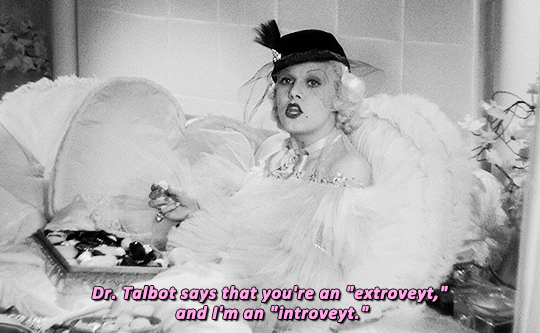
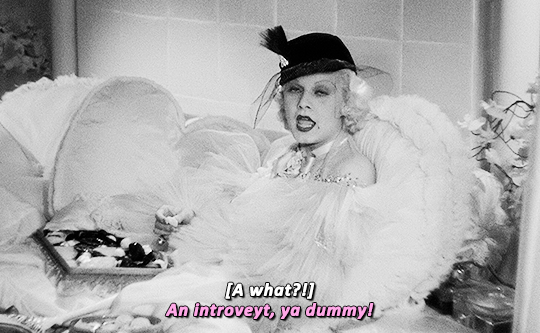
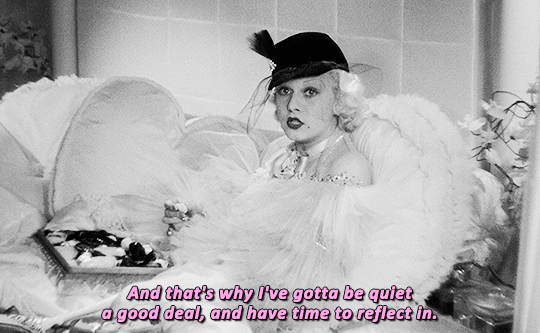
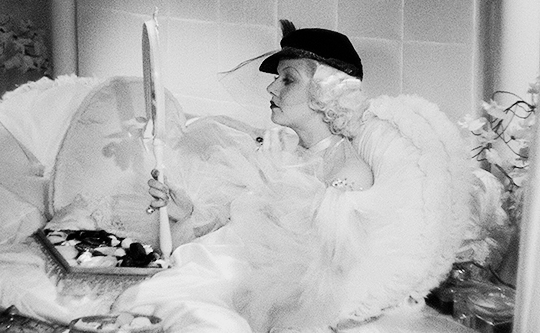
JEAN HARLOW in DINNER AT EIGHT — 1933, dir. George Cukor
1K notes
·
View notes
Photo










Remembering screen legend Marilyn Monroe on her birthday 🌹
Born on June 1, 1926 as Norma Jeane Mortenson (baptized Norma Jeane Baker) in Los Angeles, California
Died far too young … on August 5, 1962 in Brentwood/L.A., California
“When I was five I think, that’s when I started wanting to be an actress. I loved to play. I didn’t like the world around me because it was kind of grim, but I loved to play house. It was like you could make your own boundaries… When I heard that this was acting, I said that’s what I want to be… Some of my foster families used to send me to the movies to get me out of the house and there I’d sit all day and way into the night. Up in front, there with the screen so big, a little kid all alone, and I loved it.”
“Hollywood is a place where they’ll pay you a thousand dollars for a kiss and fifty cents for your soul. I know, because I turned down the first offer often enough and held out for the fifty cents.”
“We are all of us stars, and we deserve to twinkle.”

Happy Birthday, Norma Jeane … may angels guard your sleep 💋!
518 notes
·
View notes
Photo

“So keep your head up high, keep your chin up, and most important, keep smiling … because life’s a beautiful thing and there’s so much to smile about!”
Marilyn Monroe
June 1, 1926 - August 5, 1962
Hold a good thought for Norma Jean … Happy Birthday, angel ❤!
107 notes
·
View notes
Text

Marilyn Monroe photographed by Bert Stern
217 notes
·
View notes
Photo

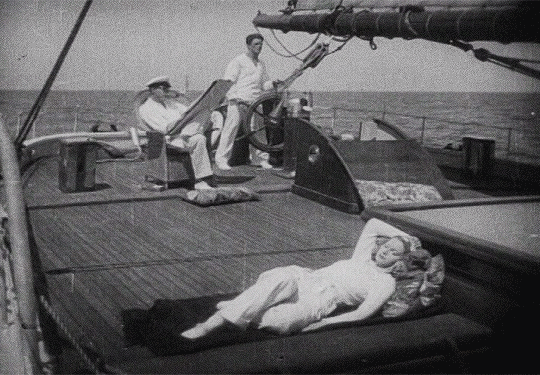
Garbo got a kick out of sporting turtlenecks at a time when only jockeys and prizefighters wore them, and she was the first film star, followed by Katharine Hepburn and Marlene Dietrich, to liberate women from skirts. Knowing observers slipped innuendo into their reports of Garbo and Dietrich’s preference for masculine styles. Vanity Fair pictured the Swede and the German, in 1932, under the headline “Both Members of the Same Club,” implying more than their mutual fondness for men’s suits and slouch hats.
Women who spurned skirts were not only violating taboos at the time, but breaking laws; in Paris in the twenties, a permis de travestissement was required of any female wearing a man’s suit. Mores were not much more relaxed on Hollywood Boulevard. “Garbo in Pants!” shouted a wire-photo caption.
“Innocent by standers gasped in amazement to see Mercedes de Acosta and Garbo in pants pretty much managed to go Where she pleased (and, perversely, she didn’t seem to mind the extra attention her fashion preferences brought her).
One night in 1928 Bill Frye slipped her into Chasen’s by rolling her trousers up beneath her overcoat, which she wore to the table. “We had already booked the reservation,” says Frye, “and when I saw what she was wearing I called the restaurant and told them I was bringing Miss Garbo to dinner and could she please come in slacks. They said no, she could not. I asked, ‘What if you put us to the right, just as we come in the door?’ They still said no, so we played our little trick.”
Greta Garbo striding swiftly along… dressed in men���s clothes.” A few days later, MGM sent out a story under Garbo’s name, in which she apologized for inflicting her “trousered attitude” on hostesses, escorts, and maitres d’.
Greta Garbo in The Single Standard (1929)
480 notes
·
View notes
Photo


SINGIN’ IN THE RAIN dir. Stanley Donen + Gene Kelly
#singin' in the rain#donald o'connor#debbie reynolds#gene kelly#1950s#song and dance folks#my beloveds!!!!
124K notes
·
View notes
Text
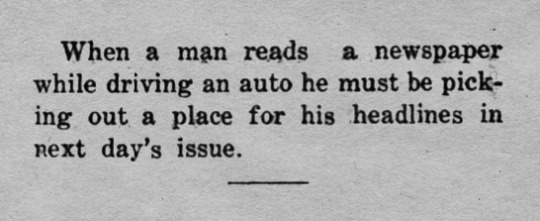
The Frankfort Index, Kansas, November 18, 1926
1K notes
·
View notes
Text
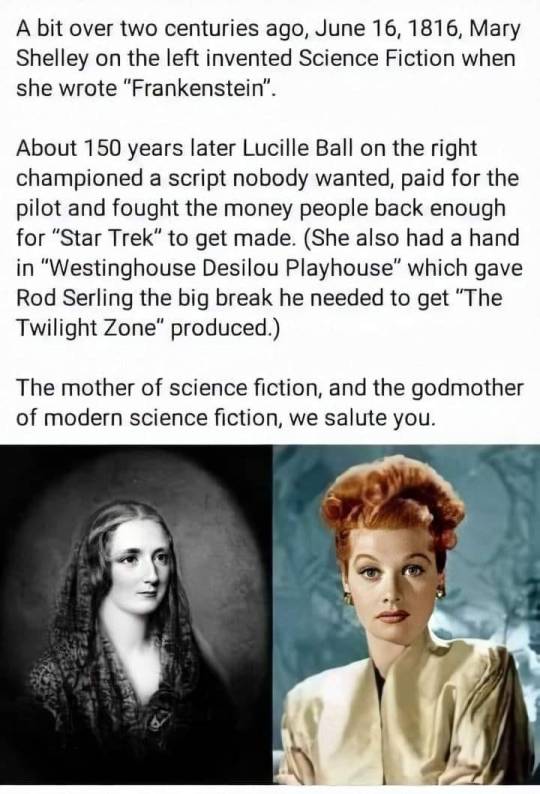
#icons and legends only#sci fi#science fiction#lucille ball#mary shelley#star trek#frankenstein#history
89K notes
·
View notes
Photo


Remembering Louis DaPron on his birthday 🌹
American dancer, choreographer and dance instructor
Known as “The Ace of Taps” because of his almost unbelievable speed, Louis DaPron won quick fame as a leading exponent of rhythm tap dancing.
Born on February 3, 1913 in Hammond, Indiana
Died on July 21, 1987 in Agoura, California
Louis, who had been dancing and teaching dance with his parents since he was a child, was hired by choreographer LeRoy Prinz and actor/choreographer Nick Castle in 1936 to assist with dance direction for films at Paramount. He seems not to have been under contract, but to have worked for various studios for the next few years. By 1941 he was the primary choreographer for Ruby Keeler in Columbia Pictures ‘Sweetheart of the Campus’, her last musical film.
In 1941, Universal Pictures was assembling a group of the best teenage dancers in the country for a dance group to be marketed as the “Jivin’ Jacks and Jills” in musical comedy films, and Louis DaPron was put under contract by Universal to be the choreographer for this group. “The Jivin’ Jacks and Jills” were popular with teen audiences, primarily for the dancing and comedy efforts of Donald O'Connor and Peggy Ryan, who were frequently teamed together. As O’Connor became increasingly popular, Universal focused on him, and the Jivin’ Jacks and Jills were disbanded after 14 films. DaPron stayed on, as O’Connor’s choreographer and as head choreographer at Universal, a role he retained well into the ‘50s. (Source: Wikipedia)


Louis DaPron with Donald O’Connor in “Are You With It?”, 1948
Working with Donald O'Connor on a number films and television shows, DaPron supplied the sounds for O'Connor’s taps, either live off-camera or pre- or post-recorded. He also staged musical scenes for Gower Champion, Perry Como, Doris Day, Vera-Ellen, Judy Garland, Mitzi Gaynor, Bob Hope, Ruby Keeler, Jerry Lewis, Ann-Margaret, Ann Miller, and Ginger Rogers. He holds the distinction as the choreographer who has appeared in the most films, performing his own work. He was also an extremely popular teacher, with his own school in Canoga Park and on the faculty at the California Dance Theater in Agoura Hills. Hundreds of students carry on DaPron’s unique tap heritage. (Source: The Library of Congress)
69 notes
·
View notes
Text
The Vamps Part 5: Asta Nielsen, Gender, and The Flappers

An aspect of Vampdom that I pointed out in past posts is a non-conformity to contemporary social norms established for women. In many Vamp roles, this manifests as women with definitive agency in their sex lives who indulge in other activities “unseemly” for women like carousing, drinking, and smoking. All together, this results in a sometimes monstrous, sometimes empowering vision of liberated femininity.

As the teens progressed, (some) women were starting to achieve the rights and freedoms they were agitating for. The First World War broke out–resulting in massive societal shifts, particularly in Europe. By the end of that war, the Vamp had lost her bite. The Flapper, who was first conceptualized around the same time as the Vamp, started to blossom as an archetype. The Flapper phenomenon had already taken hold by the time the eponymous film, The Flapper (1920), came out.
With this paradigm shift, the idea of non-conformity to gender roles and expression was transmuted from Vamps to Flappers. This new image of liberation was more youthful and a lot less Spiritualist. It’s honestly odd to look back at Louise Brooks from 2018 and think of her as unfeminine, but compared to the earlier styling norms, there’s a marked difference in gender presentation. Hair got much shorter, or women would style their longer hair in mock bobs. (Remember a few years ago when people were braiding the hair on the sides of their heads to fake an undercut? Yeah, like that.) Hemlines got ever so slightly higher (still below the knee). The idealized body type moved from full hourglasses to a boyish, unrestrained figure. However, while Vampdom was largely the domain of fictional characters, Flappers were real-life women too.

Flappers on film still had much in common with Vamps despite the strong style shift. In a way, the Flapper feels like the Vamp’s little sister. Flappers were emboldened young women, wanton with expressions of their sexuality, sometimes to the detriment of themselves or of weak-willed men. The results of their antics could be tragic or reformative. Flappers are often more sympathetic characters than Vamps.
The actresses that had fully shaped their careers around Vamp roles started to go stale in the public imagination right as Flappers came into vogue. Theda Bara’s star started to flicker and she retired in the 1920s. Pola Negri had a more diverse career, but even she struggled to keep her popularity and relevance in the American film industry in the 1920s.
These developments are precisely why I chose to close out this series with Asta Nielsen. Asta had a singular career. Though it only lasted two decades, the creative control she executed over her films and star image gave Asta the freedom to play all manner of roles. She cut her teeth with Vampy roles but expanded on their non-conformity to gender roles. She crossdressed often, though her crossdressing was never just for yucks. Asta brought modernity to her roles. She’s not an easy figure to categorize as a single type, but boy did Asta make a compelling Vamp.
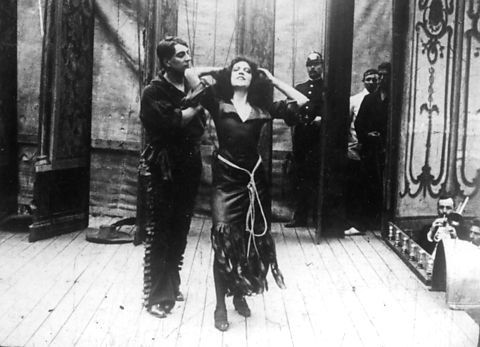
Asta Nielsen was born to a poor family in Copenhagen in the 1880s. As a teenager, she tried to break into the Danish theater scene with limited success. Nevertheless, Asta made the right connections to land a leading role in Afgrunden/The Abyss (1910). Her role of Magda Vang (what a name!) would quickly establish her as an international star and the film was a hit. The Abyss is what was termed an “erotic melodrama.” It follows a music teacher (Asta) engaged to a reverend’s son (Robert Dinesen). She drops their engagement to run away with a lothario circus performer (Poul Reumert). Things are pretty messy from there on out. Even by modern US standards, Asta’s performance opposite Reumert is racy and overtly sexual. Unsurprisingly perhaps, the film was edited for its American release because US censors weren’t too keen on a woman in a skin-tight costume tying up her lover and gyrating all around him. For real.
Even this early on, Asta’s acting is startlingly naturalistic. (That said, I don’t much like how often people suggest that she was the only actor not going into histrionics?) There’s an energy in all of Asta’s performances, even The Abyss at only 21 years old, that seems like she silently saying “Gender? I hardly know her.” I know that’s a weird and hazy statement to make, but you really need to see some of her films for yourself to see what I’m getting at. Words fail when you try to describe Asta.
Asta’s popularity after The Abyss was so great that she was quickly imported to a larger film industry in Germany. By 1911, a new film production division, Internationale Film-Vertriebs-Gesellschaft, was built around Asta in Vienna with Paul Davidson of Projektions-Aktiengesellschaft Union (PAGU) and Urban Gad, Asta’s director/husband. The goal behind this production arm was to make the best vehicles for Asta. Asta was even given creative say so over all the productions. In her memoirs, Asta claims she was involved in most every aspect of the filmmaking process. Not only did she have control over her image, she also had systemic support and assured international distribution for all of her films. Some other women filmmaker contemporaries struggled to turn a profit on their films largely because of a lack of industrial support (like Musidora). The massive success of Asta, and of Mary Pickford and Frances Marion in the US, shows what a difference having the machine behind you makes.
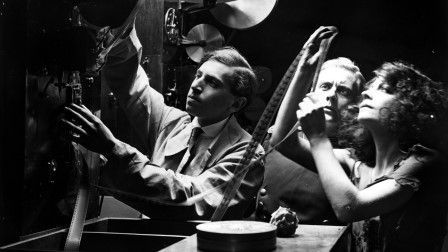
In Germany/Austria, Asta made a wide array of films: dramas imbued with Asta’s trademark “spiritualized eroticism,” broad comedies, and social justice films. Asta did a turn as a fictionalized version of Emmeline Pankhurst in The Suffragette (1913), enshrining the work of Pankhurst and her compatriots. In Das Liebes ABC / The ABCs of Love (1916), Asta crossdresses to teach her fiance how to be a man because she’s better at it than he is. (It’s even queerer than it sounds.)

After World War I, Asta undertook a unique project that has lingered in the public consciousness: Hamlet (1921). It’s also the film I chose to cosplay. Based on a somewhat offbeat interpretation of Shakespeare’s play, Asta’s Hamlet is a woman, raised as a man as royal succession insurance. Though the original interpretation has problematic elements to it, the film is subversive and enthralling. Asta has been touted as a master of the silent soliloquy and so the casting is impeccable. She’s astounding in the role and her scenes with Horatio are… something else. Asta’s Hamlet isn’t just a cool look or a great tumblr gif set, it’s emblematic of her approach to film performance. Asta’s performances are always layered–her characters contain multitudes. She truly had a knack for polymorphically expressing emotions and identities all at once and all together. Hamlet makes that tendency in her performances literal, by layering Hamlet’s identity. I personally marvel at how subtly she can work with facial expressions despite heavy and stylized makeup.
So, after reading all this, you may be wondering why you don’t know Asta and her films better. She was a massive star, an influential artist, and prolific. That should be a recipe for immortality. It turns out that the recutting of The Abyss to meet US censor approval was the beginning of a career-long trend. On top of that, during and immediately following World War I, there was an American embargo on German films. In the end, Asta didn’t get much of a chance to take off in the US as her films were so suppressed. Perhaps Asta’s most notably re-edited film was G.W. Pabst’s Die freudlose Gasse / The Joyless Street (1925). If you’re American, you probably think of The Joyless Street as the film that broke Greta Garbo in the US market. Well, elsewhere, Asta’s role is just as prominent in the film. Asta plays a woman pushed to a life and crime and prostitution by desperation. The role is minimized in the US release, giving Garbo’s role significantly more prominence.

Garbo herself went on to talk openly about the influence Asta had on her acting style. Garbo even stated that she learned everything she knew from Asta. Frankly, that’s clear. Garbo is one of my all-time favorite actors but she is a disciple of Die Asta in all the best ways. If you know Garbo’s work then you know a little of Asta. It’s a beautiful thing to be honest.
So, to me, Asta is a bridge. It’s her films that are often cited as ushering in feature-length filmmaking in Europe. She effortlessly traversed the tropes of the teens and the tropes of the twenties. She was the key to bringing naturalistic acting to the fore in the silent era. She could own Vamp roles, even with a lithe figure and androgynous energy, and she could still be a spark for the full-blown Flapper phenomenon with her modish styling. Asta may never have been a Vamp in terms of her public image, but she was never any one thing other than Die Asta.

Learn how to get the look BELOW THE JUMP
Keep reading
#what a fascinating individual#and what a stellar post!!#asta nielsen#vamps#flappers#1920s#also i fully relate to the line 'gender? i hardly know her' lolol /gen
696 notes
·
View notes
